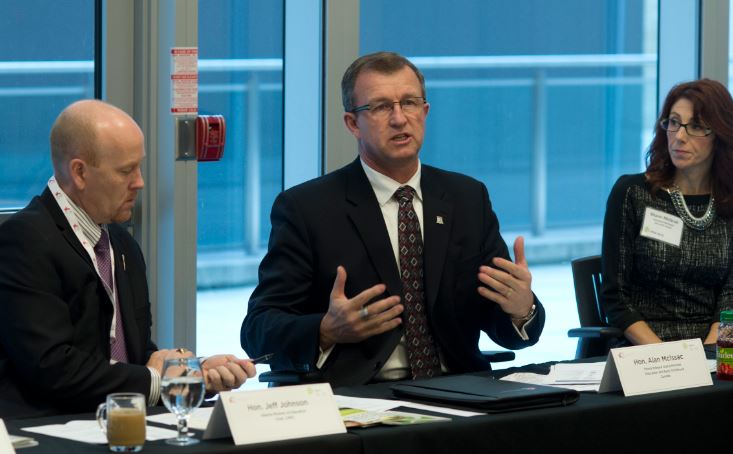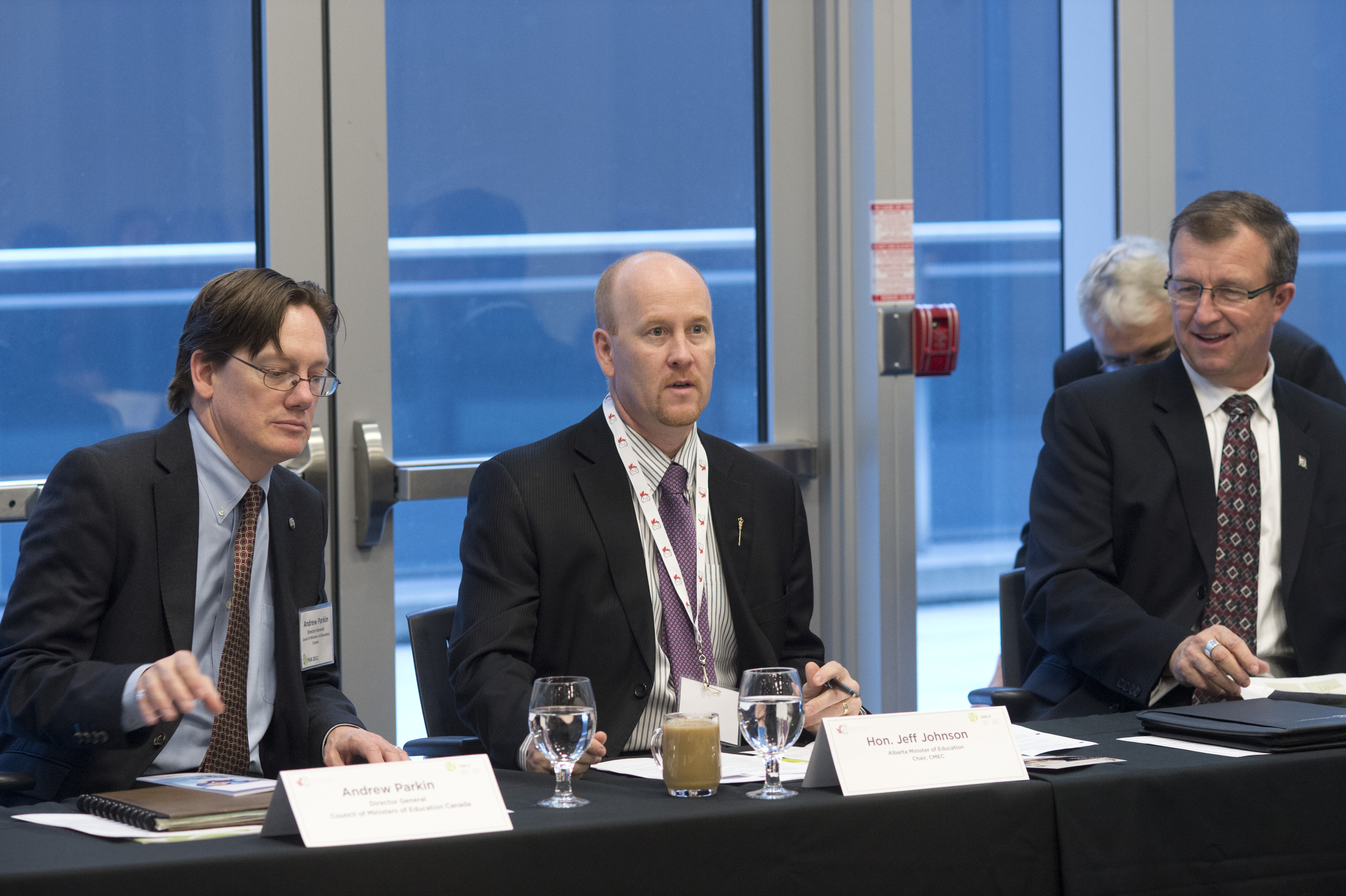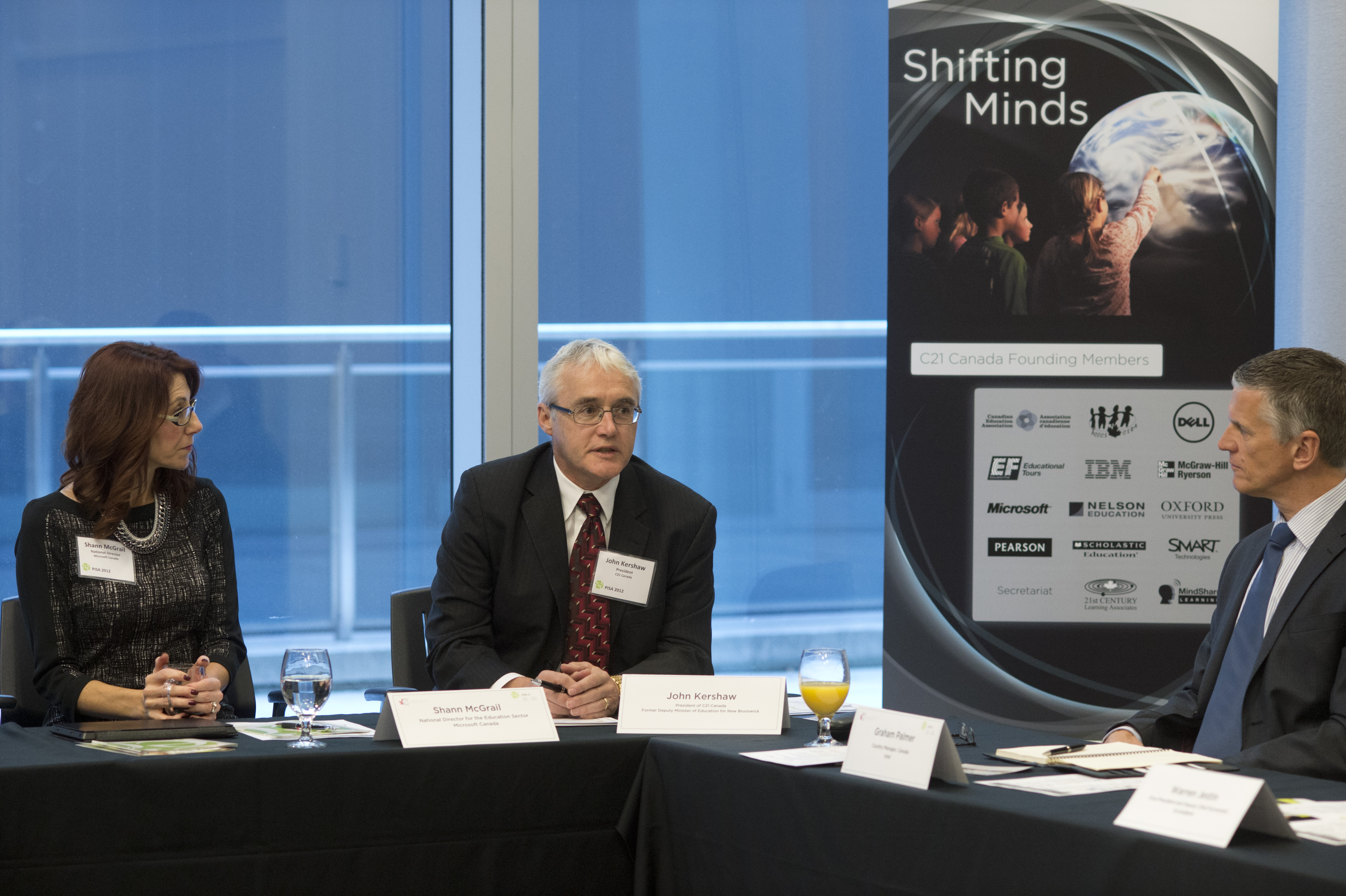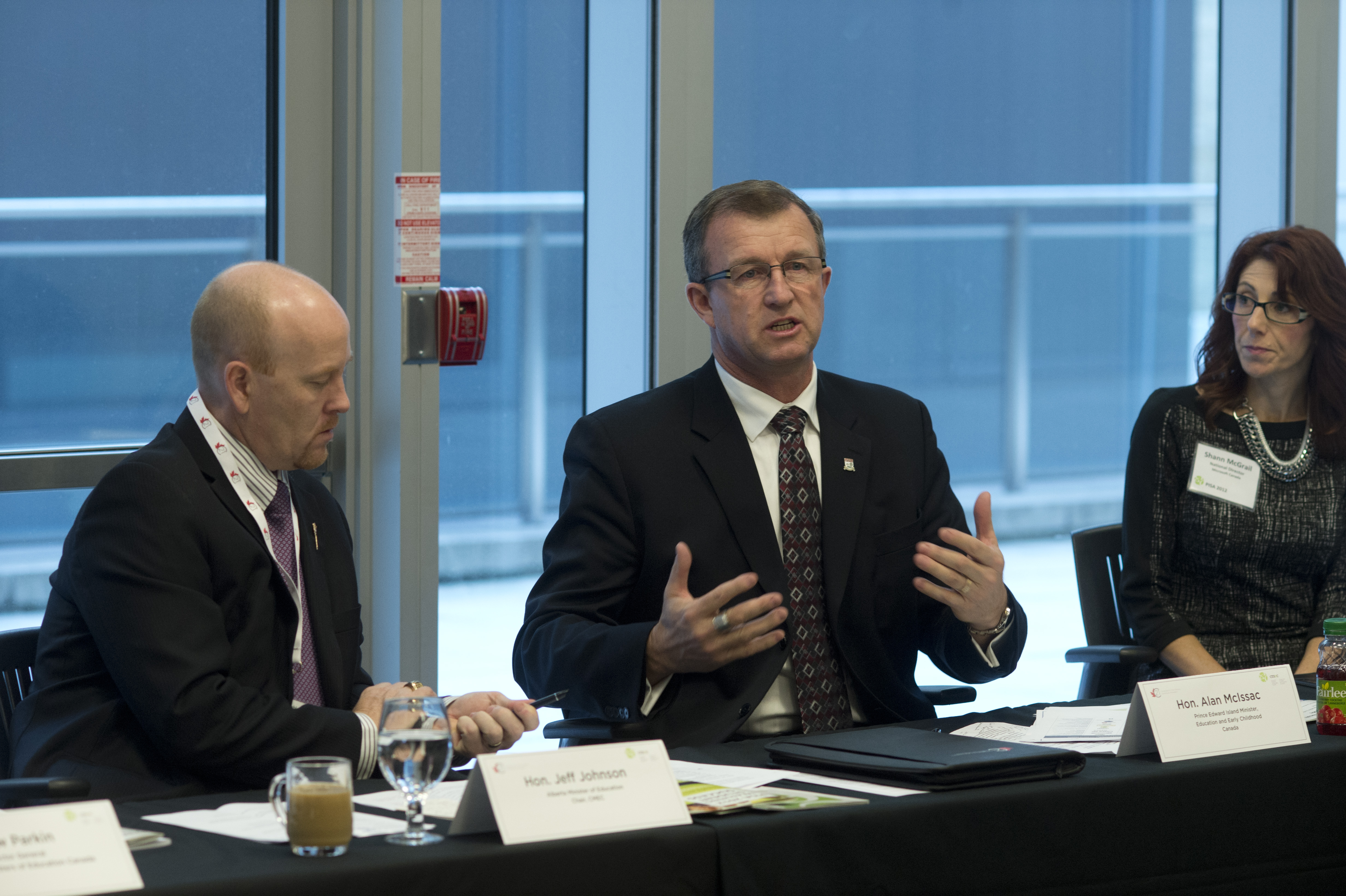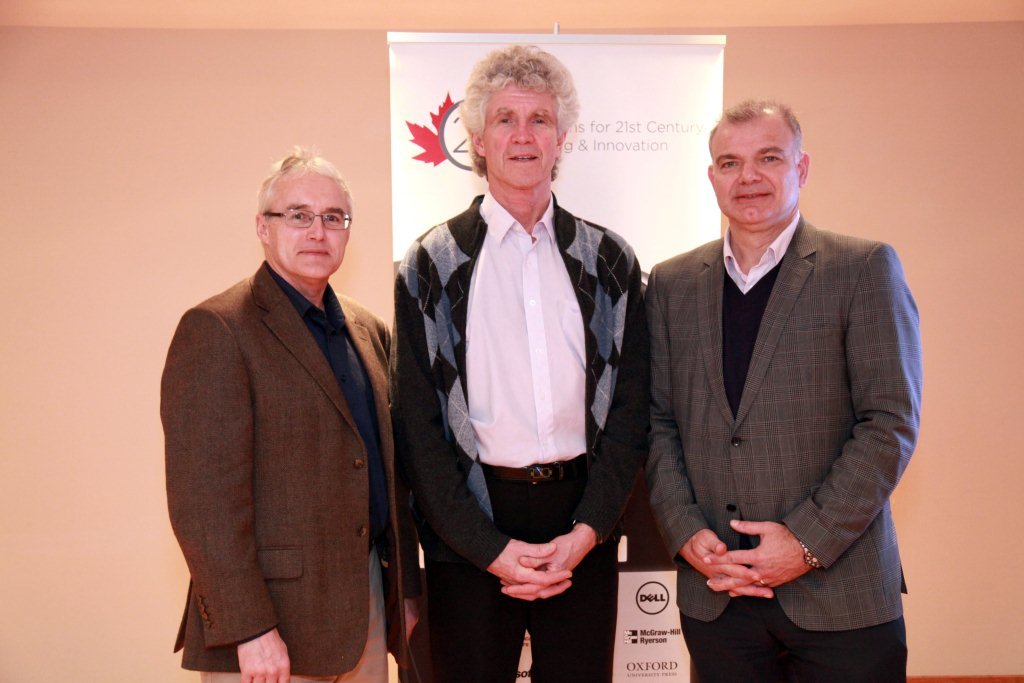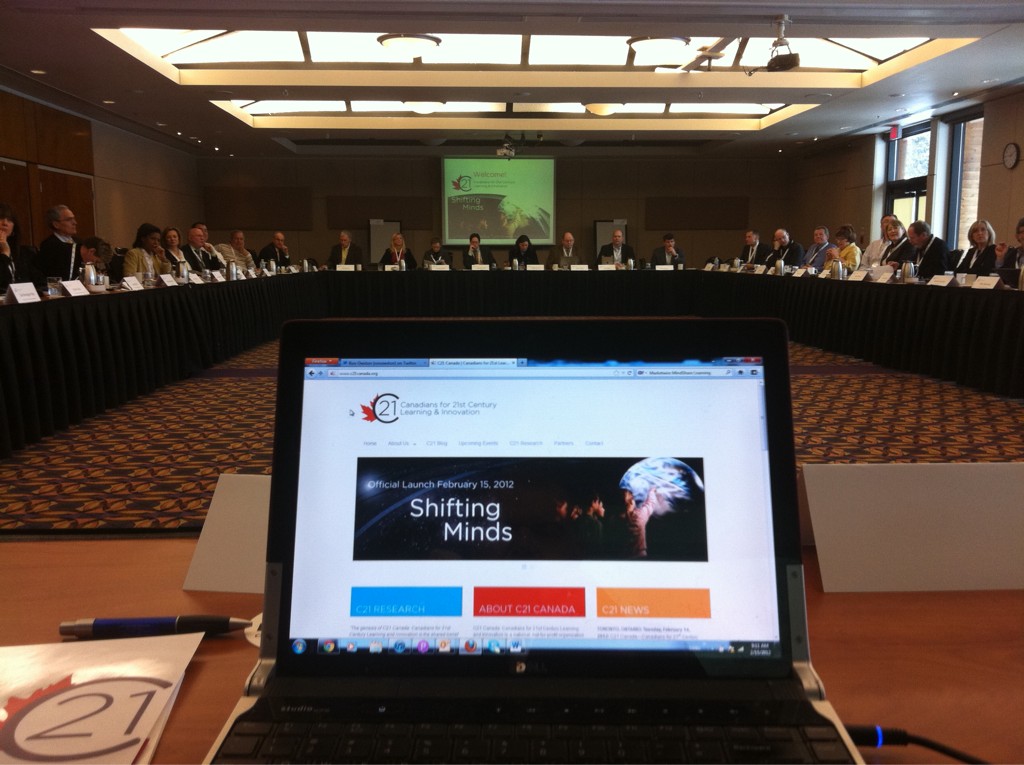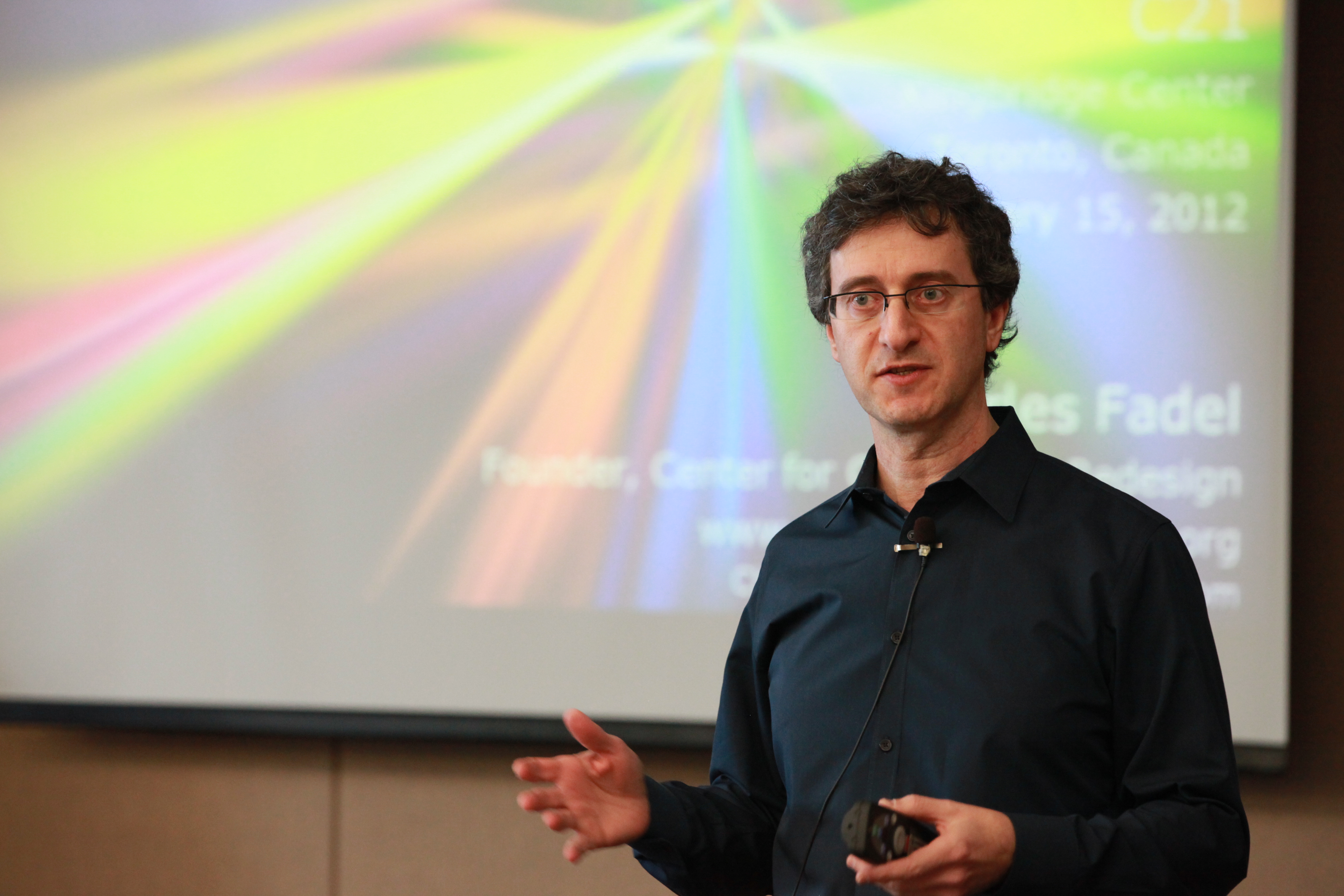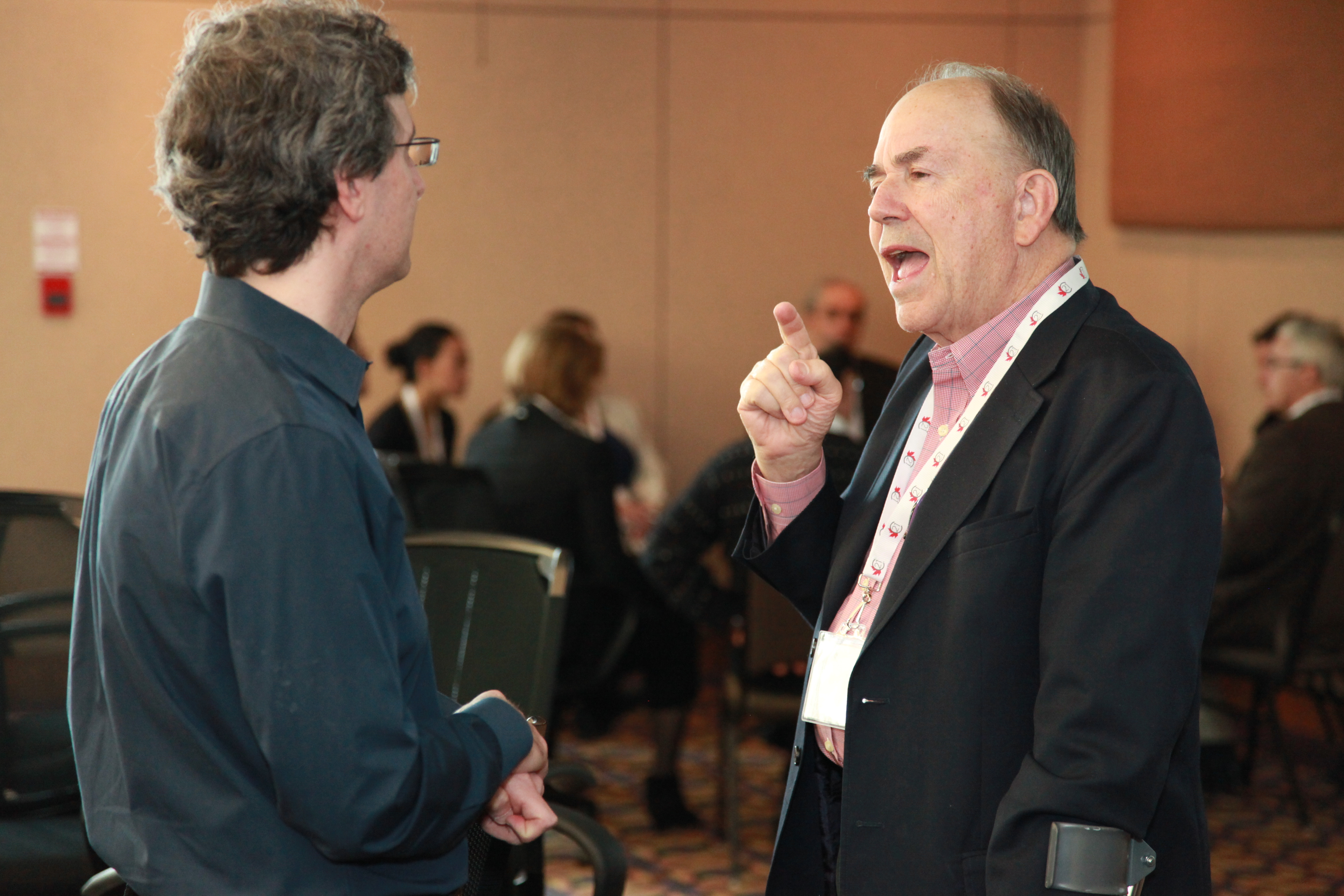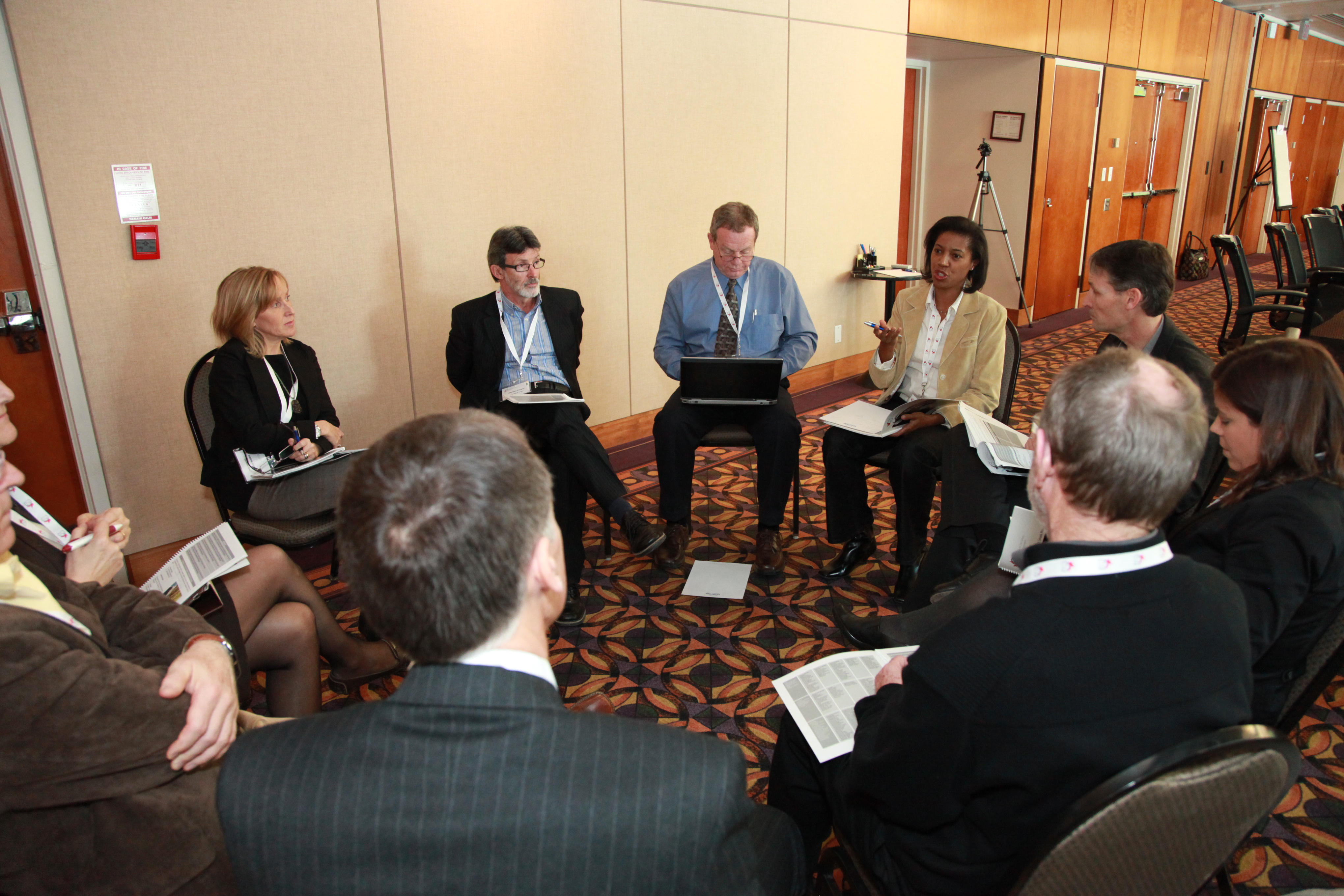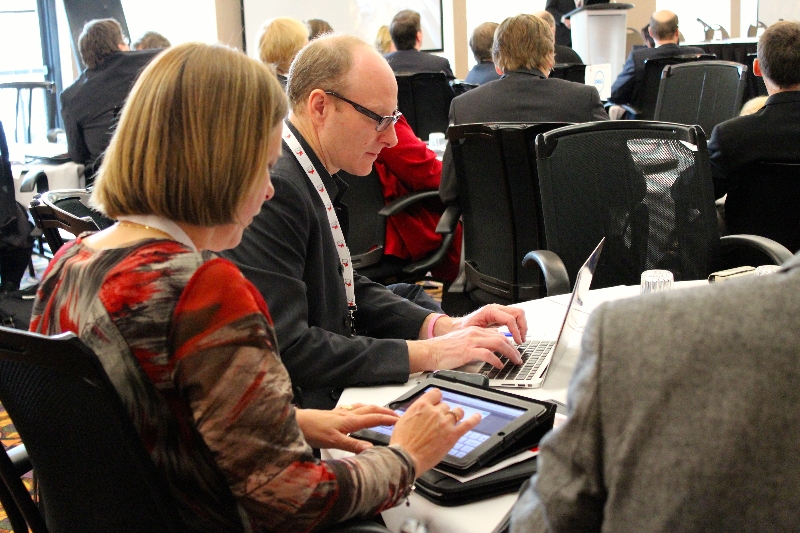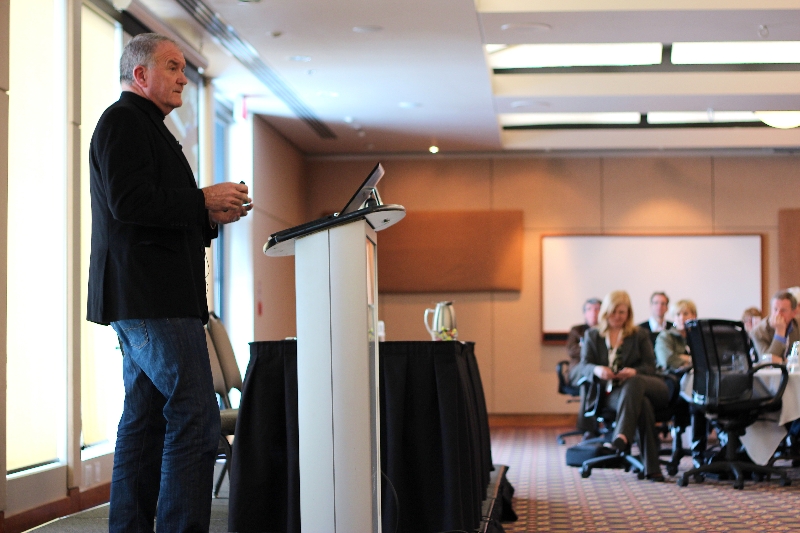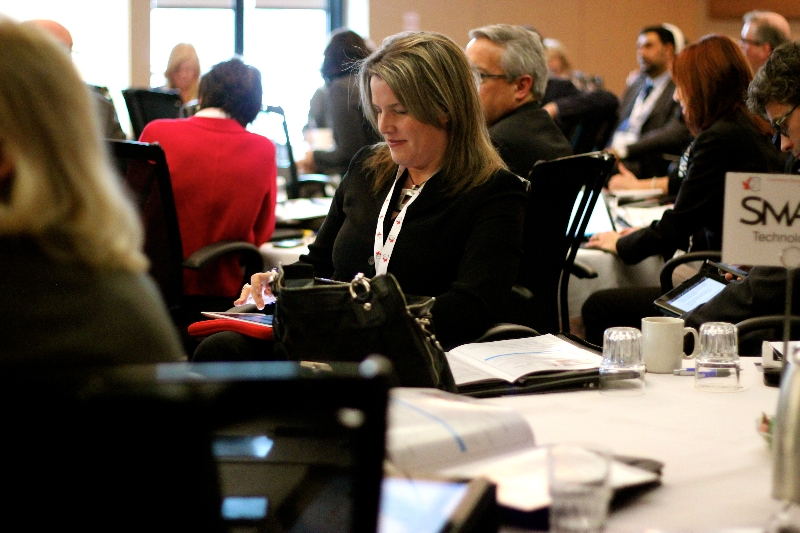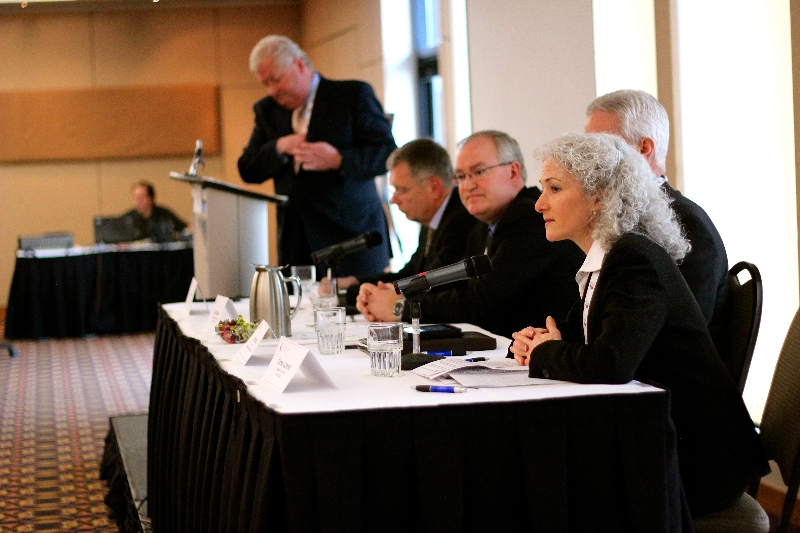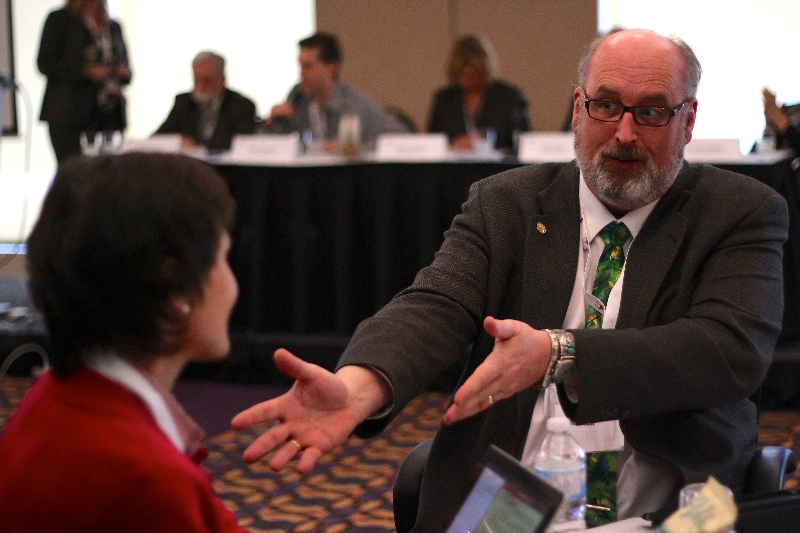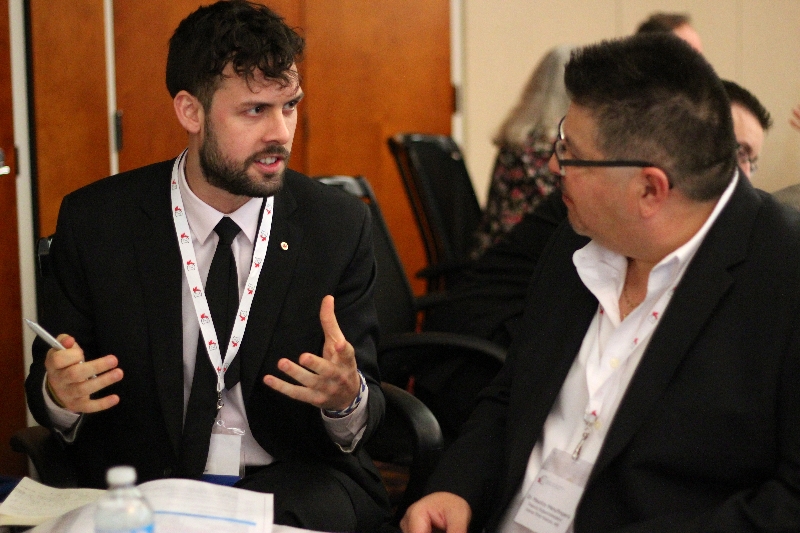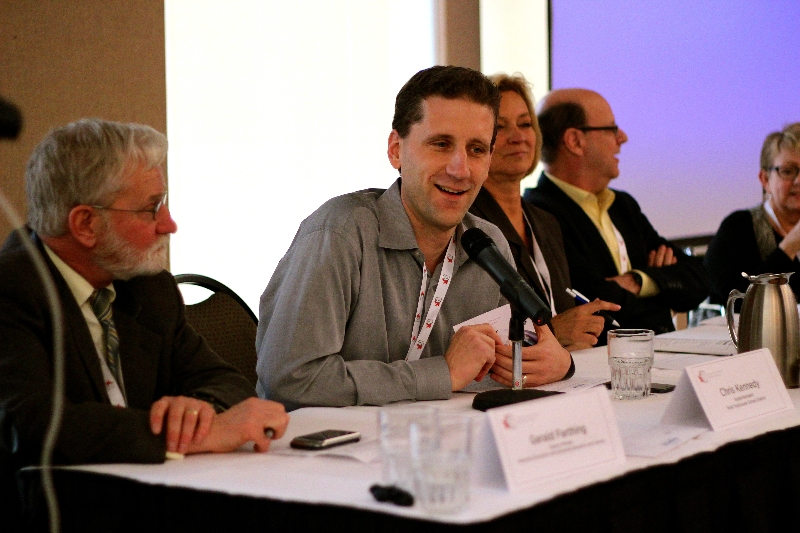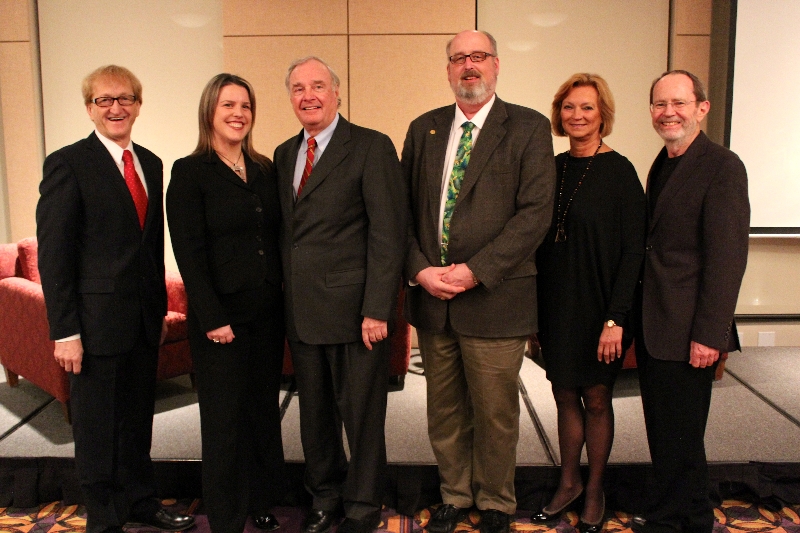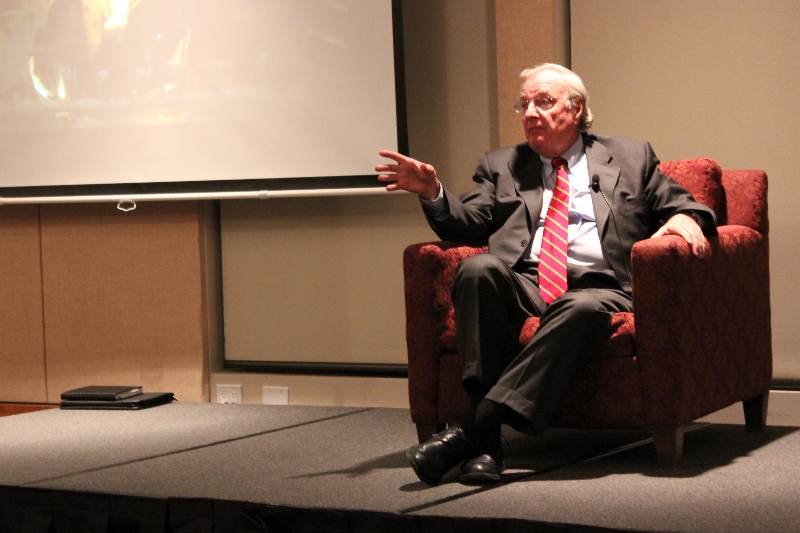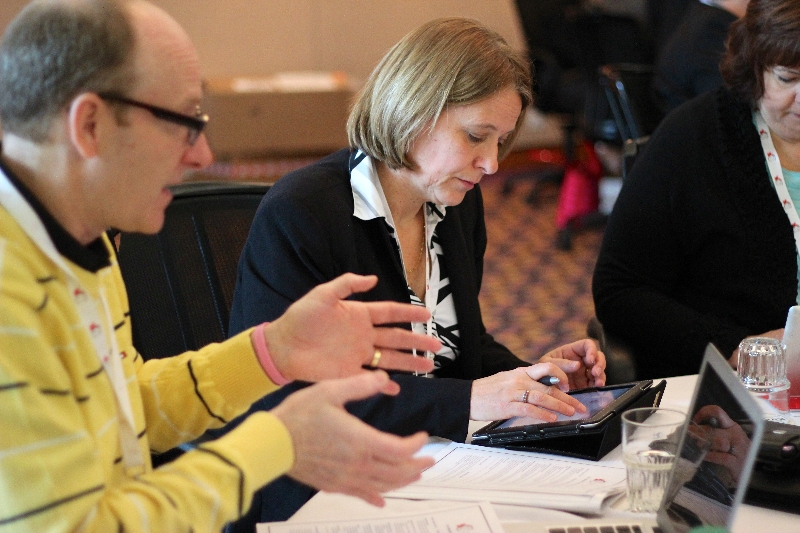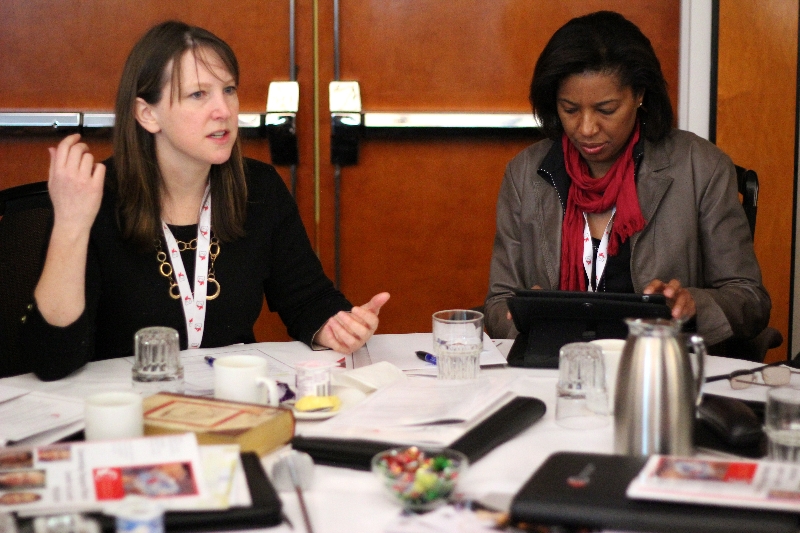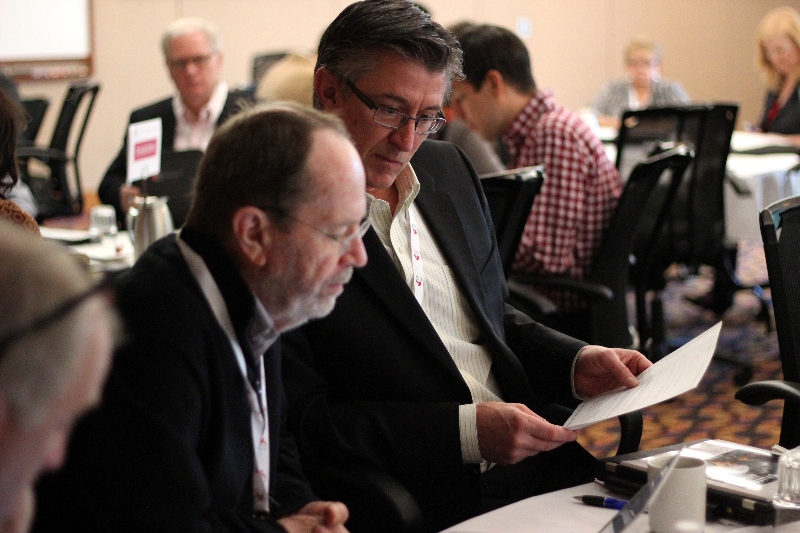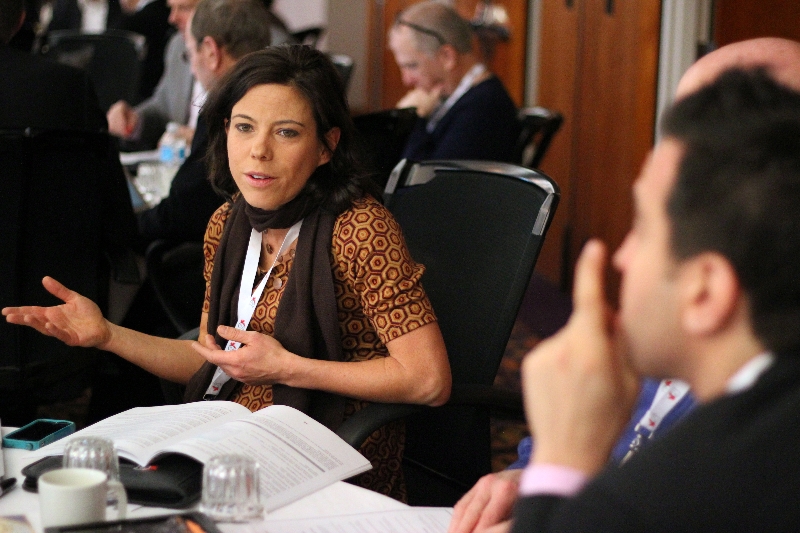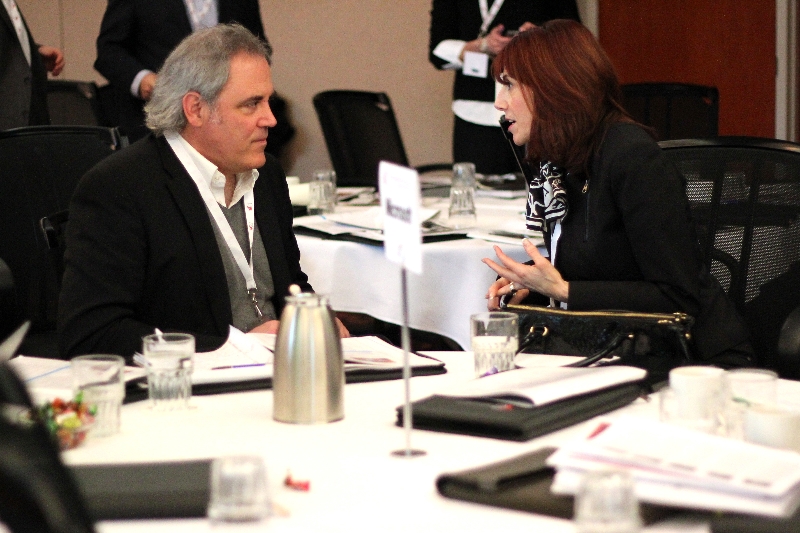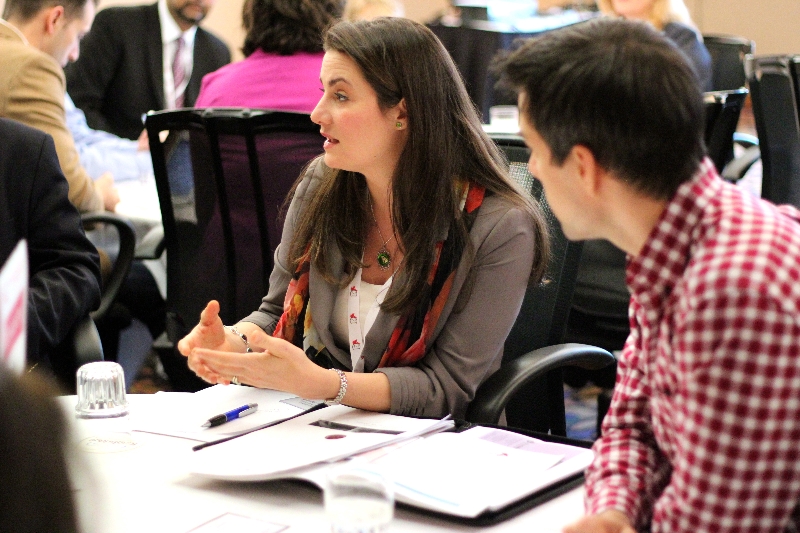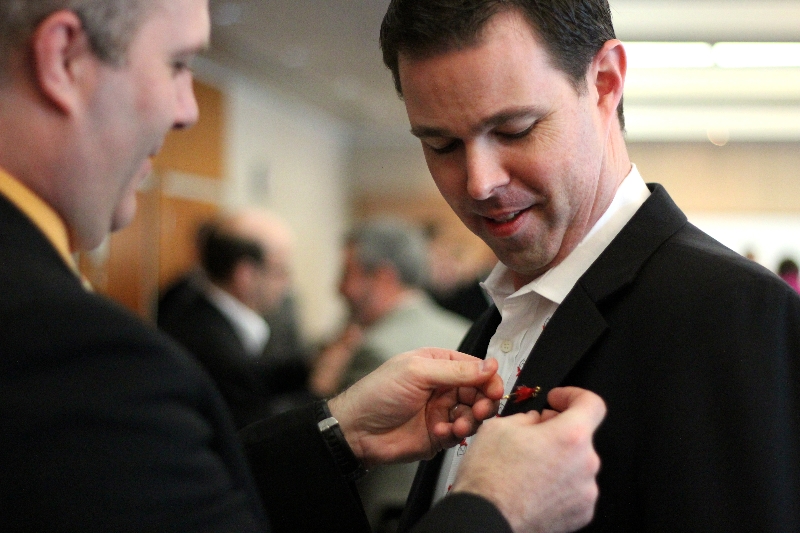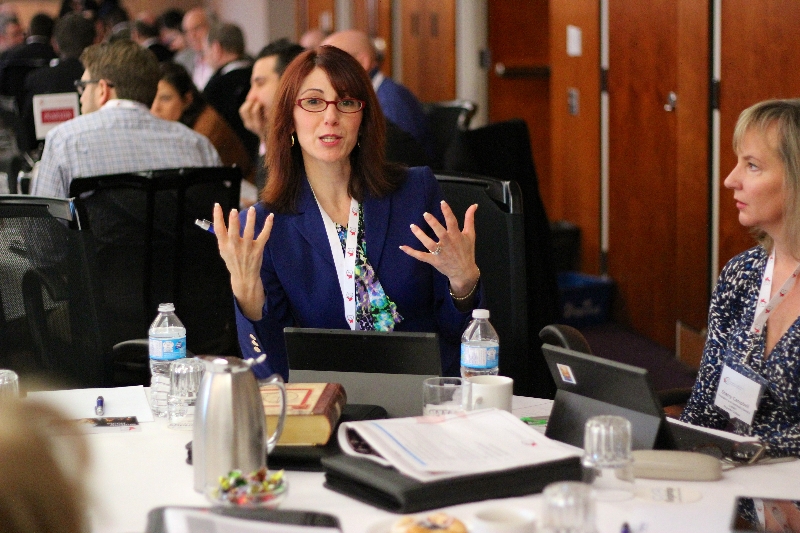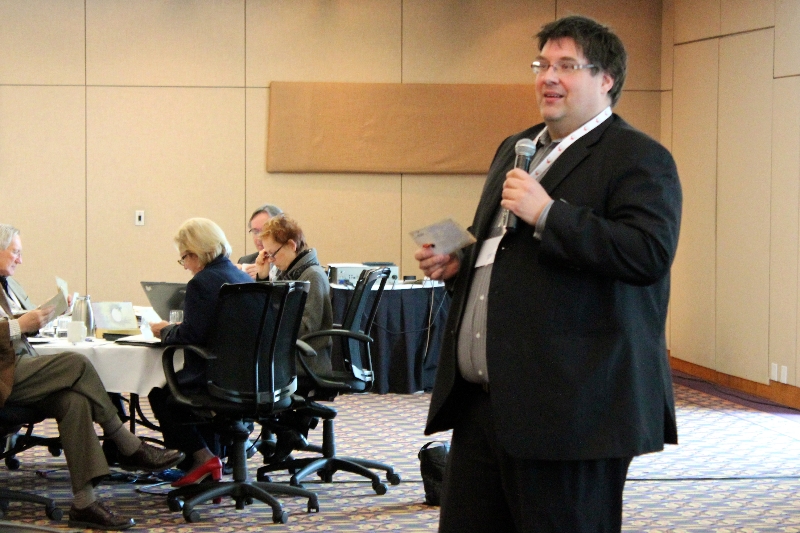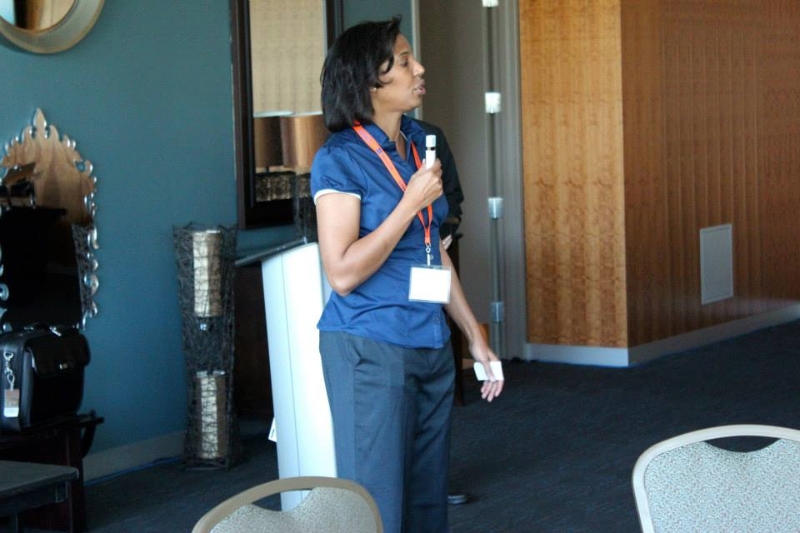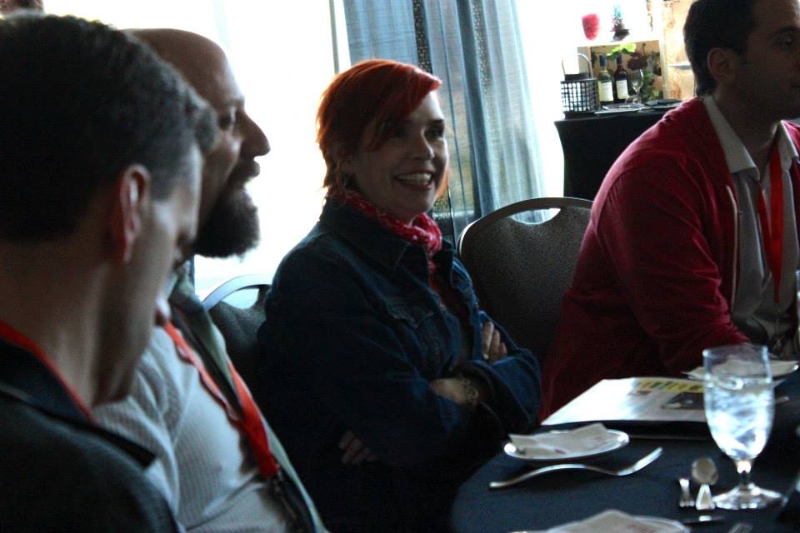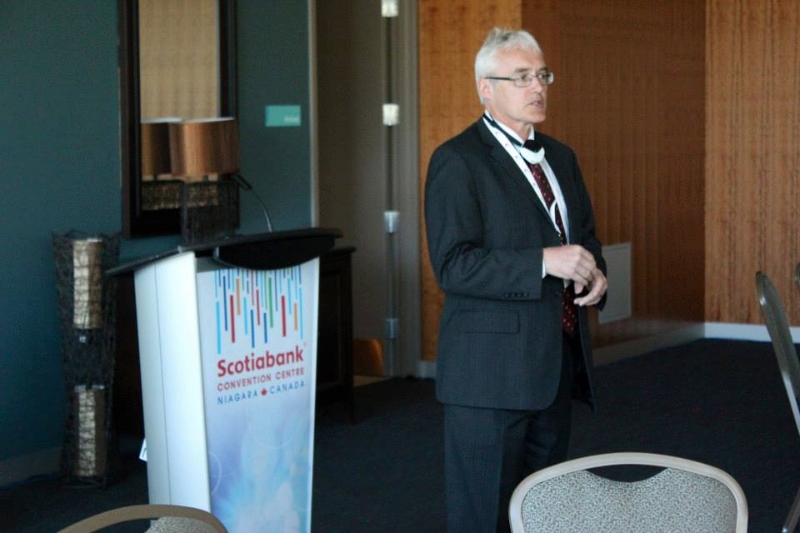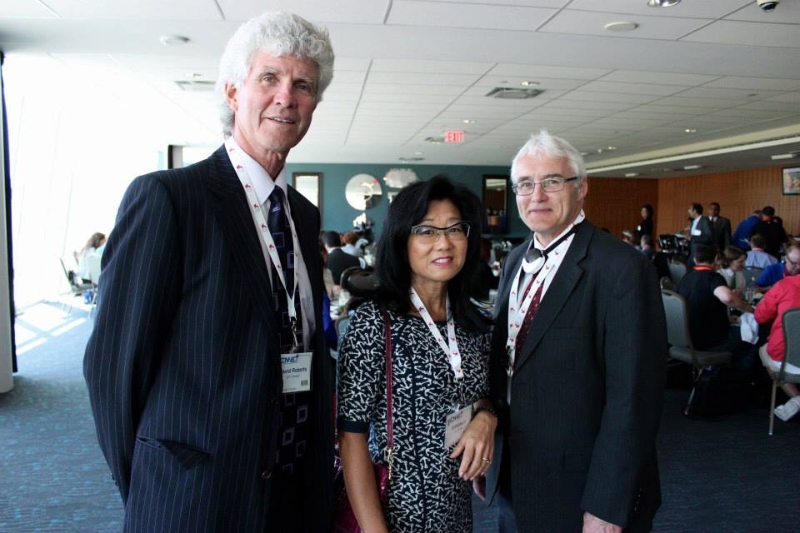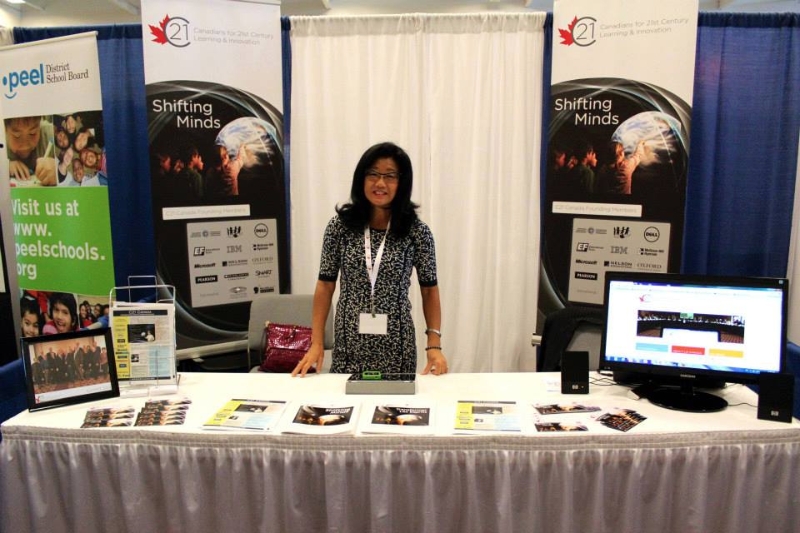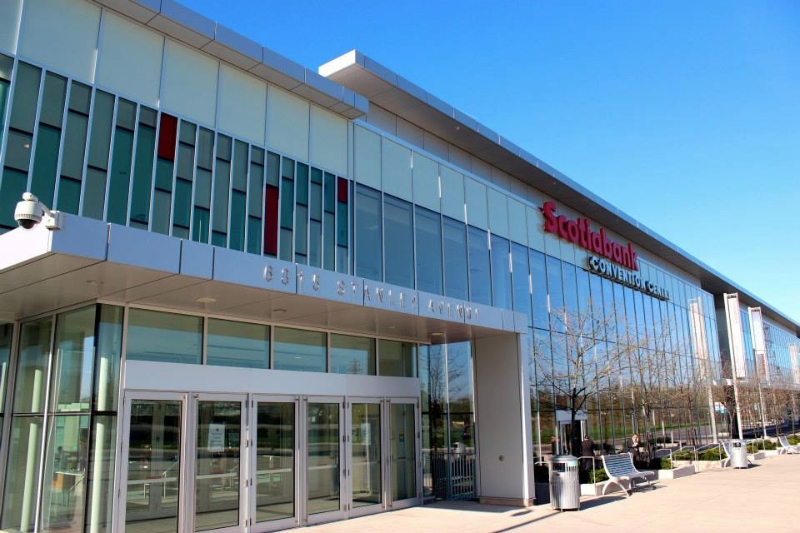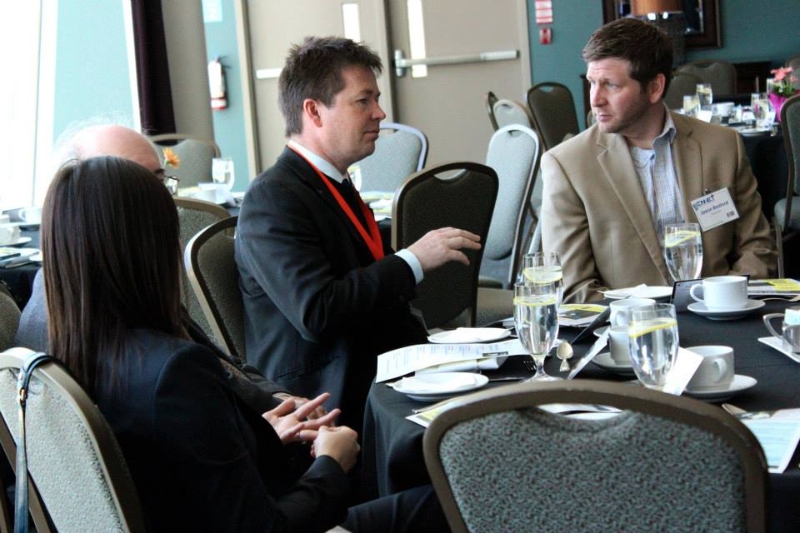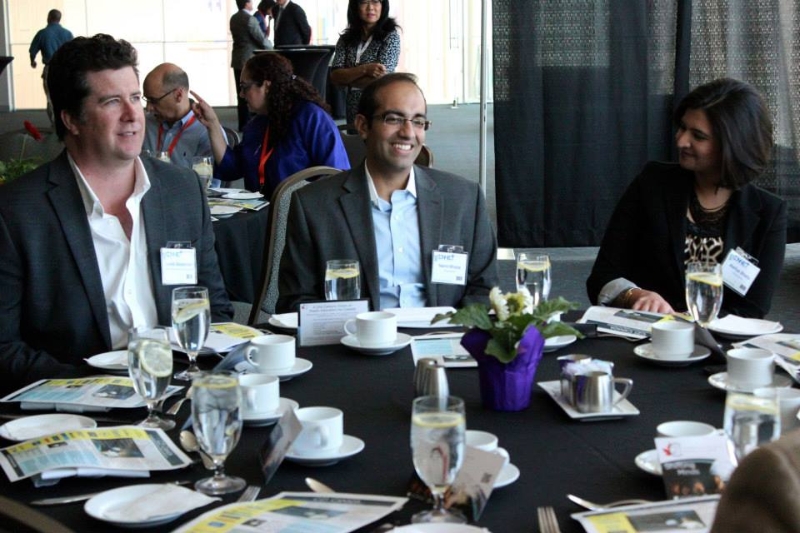Click here for April 3,2015 CEO Academy Resource List
Non-Government References: General Interest
Comparing Frameworks for “21st Century Skills”
Article comparing various frameworks for “21st Century Skills,” (P21, EnGauge, OECD, AAC&U), as well as frameworks for “Digital Literacies.” (The “Digital Literacies” frameworks were not researched in depth as the current document deals with a broader skill set. Also note that titles for the P21 skills might not be exactly correct.) Dede, C. (2010). Comparing Frameworks for 21st Century Skills. In Bellanca, J., & Brandt, R. (Eds.), 21st century skills: Rethinking how students learn (pp 51-74). Bloomington, IN: Solution Tree.
Website
Toward a New Learning Ecology Teaching and Learning in 1:1 Environments: As the nation’s economy continues its irrevocable shift from manufacturing toward idea-driven, creative industries, our schools—and the teaching and learning enterprise at the heart of our schools—need to undergo a transformation as well. The result of such a transformation needs to be a type of educational experience and expertise that will not only support but also ignite participation in—and leadership for—an idea driven,creative economy. Equally important as supporting a new economy is educational experience and expertise that supports a global citizenry.
Toward a New Learning Ecology Teaching and Learning in 1:1 Environments | Published: April 22, 2009 11:51 AM Authors: Hiller Spires, Eric Wiebe, Carl A. Young, Karen Hollebrands, & John Lee
Website
21st century skills and serious games: Preparing the N generation
Ensuring that all students have the opportunity to participate fully in society is a daunting challenge for educators. Central to this challenge in the 21st century is changing how we view learning. Serious games, an area that is gaining momentum in education, has potential to transform how we view learning as we meet the fast- paced, ever-changing demands of modern life and work. Forging a conceptual bridge between serious games and 21st century workplace skills, this chapter: 1) defines evolving characteristics of the 21st century learner, 2) synthesizes proposed 21st century skills from different disciplines, and 3) analyzes how certain features of serious games can promote the highly valued 21st century skills of expert problem-solving and complex communication. The chapter closes with a call for more thoughtful empirical studies in order to establish a research base that ultimately will affect policies around the use of serious games in school settings.
Spires, H.A. (2008). 21st century skills and serious games: Preparing the N generation. In L.A. Annetta (Ed.), Serious educational games (pps. 13-23). Rotterdam, The Netherlands: Sense Publishing.
Website
Equipping Every Learner for the 21st Century
A Cisco Whitepaper that proposes a new paradigm of 21st century learning; one that will require a holistic transformation of education systems. A corporate site but consistent with what other framework documents are saying with respect to public education and the need to change to answer the needs of the 21st Century. This paper is very similar to P21 in philosophy and content – Excellent backgrounder on the “why” of 21st Century learning. Also speaks to pedagogical changes and the role of leadership in effecting the requisite changes.
Cisco Systems Inc. (2008). Equipping Every Learner for the 21st Century. Retrieved from The Network: Cisco’s Technology News Site website
Horizon Reports
Horizon Report > 2011 K–12 Edition
Emerging technologies and key trends and challenges that will impact teaching, learning, and creative inquiry in the K-12 sector over the next five years. Reports have been generated for the past three
years. The Link below is to the most recent 2011 report.
Johnson, L., Adams, S., and Haywood, K., (2011). The NMC Horizon Report: 2011 K-12 Edition. Austin, Texas: The New Media Consortium.
New Media Consortium Website
Kaiser Family Foundation Reports
Generation M2: Media in the Lives of 8- to 18-Year-Olds (2010)
A national survey by the Kaiser Family Foundation found that with technology allowing nearly 24-hour media access as children and teens go about their daily lives, the amount of time young people spend with entertainment media has risen dramatically, especially among minority youth. Today, 8-18 year olds devote an average of 7 hours and 38 minutes (7:38) to using entertainment media across a typical day (more than 53 hours a week). And because they spend so much of that time ‘media multitasking’ (using more than one medium at a time), they actually manage to pack a total of 10 hours and 45 minutes (10:45) worth of media content into those 7½ hours.
This is the third in a series of large-scale, nationally representative surveys by the Foundation about young people’s media use. It includes data from all three waves of the study (1999, 2004, and 2009), and
is among the largest and most comprehensive publicly available sources of information about media use among American youth.
Victoria J. Rideout, Ulla G. Foehr and Donald F. Roberts (2010). Generation M2: Media in the Lives of 8-to 18-Year-Olds. The Henry J Kaiser Family Foundation, Washington. Publication (#8010).
Website
Pew Internet American Life Project Reports
The PEW Internet and American Life Project prepares reports on the impact of the internet on all aspects of American life. Technology, Social media and Internet use stats are available in several categories for
all age groups.
PEW Internet and American Life Project website
Walden University Study
This study, based on a survey of more than 1,000 U.S. K–12 teachers, addresses five myths about technology use in education—particularly by teachers—and educators’ perceptions about the effects of technology use on student learning, behaviours and skills. It is suggested that teachers have a vital role to play at the intersection of technology and 21st century expertise—modeling their confidence with technology, guiding young minds toward constructive educational purposes, and teaching students the tried and new skills for college and career readiness in a competitive world. This study also comments on the impacts of teacher technology use on several aspects of student performance and behaviour. 21st Century skills acquisition is also impacted.
Grunwald and Associates. (2010). Educators, technology and 21st century skills: Dispelling five myths. Retrieved from Walden University, Richard W. Riley College of Education website
Canada
21st Century Fluency Project (Infosavvy Group, British Columbia)
Collaborative effort for sharing ideas and “developing resources for transforming learning to be relevant to life in the 21st Century”. They have produced many papers on the need for changes in education. They
have also produced “Curriculum Integration Kits” and are working on a series of 6 publications as part of the 21st Century Fluency Project. (2 examples below).
Website
Living on the Future Edge: Windows on Tomorrow
The first in a series of six books to be authored by the 21st Century Fluency Project. Focuses on the state of education and the need for change in the face of society and its relationship with technological innovation. The book calls for teachers to abandon their paradigms in favour of digital age strategies for engaging students and bringing relevance to education. They emphasize that change is not going to happen but is, has been and will continue to. Emerging tech trends that impact education are explored and ideas for innovative practice are suggested.
Jukes, Ian; McCain, Ted & Crockett, Lee. (2010). Living on the Future Edge: Windows on Tomorrow. Kelowna, BC, Canada: 21st Century Fluency Project Inc. Pp. 152 ISBN 978-1-4499-7552-6.
Website
Understanding the Digital Generation: Teaching and Learning in the New Digital Landscape
This book gives specific reasons why teachers should incorporate technology into pedagogy to meet the needs of “Digital Immigrants”. Provides various accounts of how students learn, think and how their brains are wired differently. All are encouraged to up their game to incorporate the tools or the digital generation to adequately prepare students for the 21st century workplace. You can’t identify what is needed for the 21st century by being rooted in 20th century thinking and practice. Examples are given.
Jukes, Ian; McCain, Ted & Crockett, Lee. (2009) Understanding the Digital Generation: Teaching and Learning in the New Digital Landscape. SAGE Publications: 21st Century Fluency Series.
Pp. 150 ISBN 978-1-4129-3844-0.
Website
United States
EnGuage (Metiri Group and NCREL) enGauge®21st Century Skills: Literacy In The Digital Age
This paper emphasizes the need for students to thrive in the digital age. Examples of specific digital age literacies and examples of the types of inventive thinking skills are highlighted. Likewise specific 21st Century and “high productivity” Skills are identified. The importance of academics is acknowledged, but against a backdrop of digital readiness and holding schools accountable for preparing students adequately. An attempt at explaining the “how” of 21st Century education is included (page 73) as is a cross comparison to earlier models such as NETS and Standards for Technological Literacy (2000).
Metiri Group and NCREL. (2003). enGauge®21st Century Skills: Literacy In The Digital Age. Retrieved 2012, from Informing the Curriculum: Qualcomm Institute for Innovation and Educational Success website
enGauge 21st Century Skills for 21st Century Learners
Two page brief summarizing the attributes of the enGauge Framework. More of a brochure, but a good tight synopsis.
Metiri Group. (2005). enGauge 21st Century Skills for 21st Century Learners. Retrieved 2012, from Metiri Learning
21st Century Learning
The convergence of Globalization, Digital Innovations and Learning Sciences Breakthroughs has created a zone of optimized learning and a compelling sense of urgency for 21st Century learning infused with technology. Caution about the implementation of tech in learning and that it can’t stand alone. Technology is implicated in enhanced student engagement. Several studies are reviewed demonstrating the impact of tech on learning. Lemke, C. (2006). 21st Century Learning. (Metiri Group) Retrieved 2012, from Metiri Learning
P21 (Partnership for 21 Century Skills)
A national organization “advocating for 21 Century readiness for every student”. P21 and its members provide tools and resources to help the U.S. education system keep up by fusing the 3Rs and 4Cs (Critical thinking and problem solving, Communication, Collaboration, and Creativity and innovation). While leading districts and schools are already doing this, P21 advocates for local, state and federal policies that support this approach for every school. This website is the home of the P21 Framework as well as a host of resources for members (includes “Route 21”, an excellent library of research and information pertaining to 21st Century Skills). P21 has also published many papers central to their framework that are germane to 21st century models of learning (see below for some of the more relevant publications).
Website
Framework for 21st Century Learning
A brief 2 pager outlining the Framework for 21st Century Learning as proposed by the Partnership for 21st Century Skills (P21). Mastery of core subjects is emphasized as is higher level understanding of content achieved by “weaving” 21st Century Interdisciplinary Themes and Skills into those subjects. Themes include: global awareness, financial literacy, civic literacy, health literacy and environmental literacy. 21st Century Skills include: creativity, innovation, critical thinking, communication and collaboration. Life and career skills such as: flexibility, self management, cross cultural skills, leadership and responsibility are also stressed.Partnership for 21st Century Skills. (2009). Framework for 21st Century Learning. Retrieved 2012, from Partnership for 21st Century Skills
A State Leaders’ Action Guide to 21st Century Skills
A call to action for State Leaders -what matters to students today differs from the traditional view. A warning about the lack of preparedness a traditional education will provide in today’s economy. A vision is presented for 21st Century learning in the US. Seven strategies are outlined for a successful 21st Century Skills Initiative and a lofty attempt at the “how of 21st Century Learning. More of a to-do list than a manual for how.
Partnership for 21st Century Skills. (2006). A State Leaders’ Action Guide to 21st Century Skills. Retrieved 2012.
21st Century Skills, Education & Competitiveness: A Resource and Policy Guide
Focus on the needed response of education to the fundamental shift in economy. This paper formalizes the connection between education and global competitiveness. It is believed that the competitiveness of
today’s students in tomorrow’s economy is dependent upon policy makers showing leadership in the creation of a 21st Century Education system. Includes sample state and local policy initiatives. Nice
graphics demonstrating economic shifts and builds a good case for the need for change.
Partnership for 21st Century Skills. (2008). 21st Century Skills, Education & Competitiveness: A Resource and Policy Guide. Retrieved 2012, from Partnership for 21st Century Skills
Beyond the Three Rs. Voter Attitudes toward 21st Century Skills
P21 document giving voter attitudes and opinions as to 21st Century Skills needed for public education. “A virtually unanimous 99 percent of voters say that teaching students a wide range of 21st century skills—including critical thinking and problem-solving skills, computer and technology skills, and communication and self-direction skills—is important to our country’s future economic success.”
Partnership for 21st Century Skills. (2007). Beyond the Three Rs. Voter Attitudes toward 21st Century Skills. Retrieved 2012, from Partnership for 21st Century Skills
Are They Really Ready To Work? Employers’ Perspectives on the Basic Knowledge and Applied Skills of New Entrants to the 21st Century U.S. Workforce
This Conference Board (and P21 – Partnership for 21st Century Skills) Report gives scores for various competencies for new entrants into the workforce that have a grad degree, and strengths and weaknesses. A survey of over 400 employers highlighting the most sought after basic and applied skills. All high school workplace entrants scored as deficient on all measures. Two-year college entrants received and excellence rating for IT Application but deficiency on all other measures. Four-year university entrants had more excellence ratings than deficiencies. Areas of needed improvement are highlighted, as is the problem of retirement rate and workforce needs. The Conference Board, Partnership for 21st Century Skills, Society for Human Resource Management, Corporate Voices for Working Families. (2006). Are They Really Ready To Work? Employers’ Perspectives on the Basic Knowledge and Applied Skills of New Entrants to the 21st Century U.S. Workforce. Retrieved 2012, from Partnership for 21st Century Skills
Project Red: The Technology Factor. Nine Keys to Student Achievement and Cost-Effectiveness
The first large-scale national study to identify and prioritize the factors that make some technology implementations perform dramatically better than others, demonstrate that schools employing a 1:1 student computer ratio and the key implementation factors outperform other schools, and reveal significant opportunities for improving education return on investment (ROI) by transforming teaching and learning. Reinforces that technology alone is not transformational. Very comprehensive look at the factors that must be changed to meet the technological needs of 1 to 1 computing. Also considers the impact of these factors on stakeholders, leaders, policy makers etc.
The Greaves Group, The Hayes Connection, One to One Institute. (2010). The Technology Factor. Nine Keys to Student Achievement and Cost-Effectiveness. Retrieved 2012, from Pearson Foundation
Project Red: Revolutionizing Education Through Technology (ISTE) 2012
An excellent, relatively new report that provides an in-depth look into how to integrate technology into education, with a focus on the United States system. The report also highlights the need to focus on
personalization and “student-centricity”.
Website
Technology has changed the world…and it can change education too
There is a positive impact of technology use on student performance and school finance. Ubiquitous technology, when properly implemented, can drastically impact educational success as measured by drop-out rates, high
stakes testing, discipline referrals and graduation rates. There are 5 key benefits of using tech in schools. Financial benefits are also mentioned.
Project Red. (2010). Technology has changed the world…and it can change education too. Retrieved 2012, from Project Red.
AAC&U (American Association of College and Universities) Educating the Net Generation
An e-book collection of articles relating to 21st Century learning. Each chapter is an article focusing on an aspect of what learning needs to look like. One chapter in particular “Curricula Designed to Meet 21st Century Expectations” is of particular interest. However all chapters/articles are worthy of our attention as they work through the issues that confront education. This book is consistent with constructivist education and therefore authentic learning. Technology and personalization also garner favor. Oblinger, D. G. (2005). Educating the Net Generation. Retrieved 2011, from Educause
ISTE ICT Skills (International Society for Technology in Education)
ISTE | NETS Student Standards 2007
The skills and knowledge students need to learn effectively and live productively in a digital world. Categories include: Creativity and Innovation, Communication and Collaboration, Research and Information Fluency, Critical Thinking, Problem Solving, Decision Making, Digital Citizenship and Technology Operation and Concepts. International Society for Technology in Education. (2007). ISTE | NETS Student Standards 2007. Retrieved 2012, from International Society for Technology in Education: (International Society for Technology in Education, 2009)
The ISTE NETS and Performance Indicators for Teachers (NETS-T)
A framework for educators to use as they transition schools from Industrial Age to Digital Age places of learning. Categories include: Facilitating and Inspiring Student learning and Creativity, Designing and Developing Digital-
Age Learning Experiences and Assessments, Modeling Digital-Age Work and Learning, Promoting and Modeling Digital Citizenship and Responsibility and Engaging in Professional Growth and Leadership. International Society for Technology in Education. (2008). The ISTE NETS and Performance Indicators for Teachers (NETS-T). Retrieved 2012, from International Society for Technology in Education
The ISTE NETS and Performance Indicators for Administrators (NETSA)
Defines what administrators need to know and be able to do in order to discharge their responsibility as leaders in the effective use of technology in our schools. Categories include: Visionary Leadership, Digital-Age Learning Culture, Excellence in Professional Practice, Systemic Improvement and Digital Citizenship. International Society for Technology in Education. (2009). The ISTE NETS and Performance Indicators for Administrators (NETSA). Retrieved 2012, from International Society for Technology in Education
Educational Testing Service ICT Literacy Standards Digital Transformation. A Framework for ICT Literacy
This framework is an early effort to provide a foundation for the design of instruments including largescale assessments intended to inform public policy and diagnostic measures to test an individual’s skills associated with information and communication technology. The authors maintain the need for ICT and the importance that ICT literacy plays and will play in an increasingly technological workplace. International ICT Literacy Panel. (2002). Digital Transformation. A Framework for ICT Literacy. Retrieved 2012, from Educational Testing Service
Jenkins Literacies based on New Media
Confronting the Challenges of Participatory Culture: Media Education for the 21st Century
This report answers to reports like the Pew Internet Project that monitors media use by students. Participation in culture will increasingly mean by digital means. We need to be sure that students are not learning how to engage this way on their own simply by interacting with popular culture. We need to be sure that students have the skills and experiences necessary to become full participants. That means understanding the role played by media in our lives and the ethics of being participants in an online environment. Simple access to technology doesn’t guarantee full engagement. This paper is an accounting of the cultural competencies and social skills required by young people to truly be part of the participatory culture afforded by technology and the new media. The roles of schools parents and society are discussed. The new skills/literacies are outlined. Henry Jenkins, R. P. (2008). Confronting the Challenges of Participatory Culture: Media Education for the 21st Century. Retrieved 2012, from New Media Literacies
Dede’s Neomillennial Learning Styles
Determining, Developing and Assessing the Capabilities of “Future-Ready” Students
White Paper produced to stimulate dialog in North Carolina about preparing their students for the future. A comparison of the various frameworks is presented. Concern is expressed that existing frameworks are short on specifics as to what actual skills and content should be taught. A good description of the economic reality of declining portions of the labour force and what this means for “future ready” students. Points out that the 21st century is quite different than the 20th in the capabilities people need for work, citizenship, and self-actualization. This White Paper discusses 1) how to determine future-ready capabilities by offering a synthesized framework for 21st century skills, 2) how to develop these capabilities through proposed curricular evolution, and 3) how these capabilities should be assessed in contemporary learning environments. Dede, C. (2009). Determining, Developing and Assessing the Capabilities of “Future-Ready” Students. Retrieved 2012, from Friday Institute for Educational Innovation
International
AALF (Anytime Anywhere Learning Foundation)
21 Steps to 21st Century Learning™ A Framework for Effectively Implementing 1-to-1
AALF’s framework for implementing a 1 to 1 computing device learning environment. A rough guide intended to inform leadership teams through the process.
21 Steps to 21st Century Learning™ A Framework for Effectively Implementing 1-to-1
(Introduction), (Main Body), (Graphic)
AUSTRALIA: University of Melbourne ACTS, Draft White Paper 1 Defining 21st century skills
A draft white paper from the University of Melbourne regarding the teaching and assessment of 21st century skills, which serves as a report to the 2010 Learning and Technology World Forum in London. This paper synthesizes research on the role of standards and assessment in promoting learning, describes the nature of assessment systems that can support changes in practice, Illustrates the use of technology to transform assessment systems and learning, and proposes a model for assessing 21st century skills. This paper is in draft and may not be used as a quotable resource. Draft White Paper 1 Defining 21st century skills
EUROPEAN UNION: Key Competences For Lifelong Learning
Framework for identifying key competencies for 21 Century Learning in Europe. Literacy and numeracy figure prominently as domains as do Digital literacy, Learning to Learn, Social and Civic Competences, Initiative and Entrepreneurship and Cultural Awareness and Expression. Directorate-General for Education and Culture (2007). Key Competences For Lifelong Learning. Retrieved 2012, from European Commission Education and Culture
Implementation of “Education and Training 2010” Work Programme “Key Competencies”
Contains the Framework for Key Competences in a Knowledge-Based Society. Features the domains and associated competences as well as the associated knowledge, skills and attitudes outcomes. There are also some interesting background documents in the literature cited. Directorate-General for Education and Culture (2004). IMPLEMENTATION OF “EDUCATION AND TRAINING 2010” WORK PROGRAMME “Key Competencies”. Retrieved 2012, from European Commission Education and Culture
OECD (Organization for Economic Cooperation and Development)
Definition and Selection of Key Competencies Executive Summary
The OECD Core competencies. A brochure summarizing the OECD’s Definition and Selection of Competencies (DeSeCo) Project. Suggests 3 categories for “key” competencies. Good backgrounder on what makes for a key competency and how to choose what they will be. This document provides a framework that can guide the longer-term extension of assessments into new competency domains (PISA is the model they use to frame this discussion). OECD Directorate for Education (2005). Definition and Selection of Key Competencies Executive Summary. Retrieved 2012, from OECD Education Directorate
21st Century Skills and Competences for New Millennium Learners in OECD Countries
A short discussion of the importance and relevance of 21st century skills and competencies in the current policy debate and the definitions and conceptual frameworks that have been used in the literature, and proposes a new three-dimensional framework, consisting of the dimensions of information, communication and ethics and social impact. Based on a questionnaire of OECD countries as well as white papers and other literature. Most countries have referenced 21st Century skills as being a priority; few have followed through to the point where assessment practice policy has been established. Also teacher training programs have not generally included 21st Century skills or the role of ICT in pedagogy into their syllabi. This paper discusses the implications that this has on the development of 21st Century skills, assessment practice and teacher preparation. Ananiadou, K. and M. Claro (2009), “21st Century Skills and Competences for New Millennium Learners in OECD Countries”, OECD Education Working Papers, No. 41, OECD Publishing
Investing in Human and Social Capital: New Challenges. Theme 2: Matching skills to new needs
A call to match education with the actual skills that are needed by the economy, this paper emphasizes the need for systems to design educational program paths that are flexible and can respond to the needs of various sectors as their requirements change in response to world economic trends. “With a rapidly rising demand for skills, countries can no longer simply rely on education systems that efficiently sort individuals, but need to improve learning outcomes throughout the population and to capitalize on the full potential of all individuals.” Employable skills and occupational mobility, mixes of vocational training and academic focus that meshes student interest with employer needs and assessment are also themes. “Schools need to get their learning goals and standards right and to transform their assessment systems to reflect what is important, rather than what can be easily measured.” OECD Education Ministerial Meeting, Paris, 4-5 November (2010). Investing in Human and Social Capital: New Challenges. Theme 2: Matching skills to new needs. Retrieved 2012, from OECD Education Directorate
Investing in Human and Social Capital: New Challenges. Theme 3: Equipping effective teachers for the 21st Century
This document initiates a discussion about teachers and their professional development; specifically what forms have the best impact and how systems can respond to the professional development needs of teachers in the face of 21st Century education. “But there is a large gap – perhaps even a gulf – between the evidence on effective learning environments for the 21st century and established practice in many of today’s schools and classrooms.” OECD Education Ministerial Meeting, Paris, 4-5 November (2010). Investing in Human and Social Capital: New Challenges. Theme 3: Equipping effective teachers for the 21st Century. Retrieved 2012, from OECD Education Directorate




